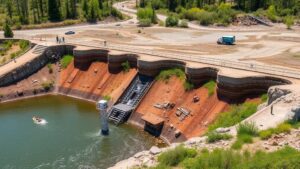Using Scientific Reasoning to Decode Lost Treasure Myths
Using Scientific Reasoning to Decode Lost Treasure Myths
The fascination with lost treasures has captivated human imagination for centuries. From pirate booty to ancient artifacts, these stories often blend history with mythology, leading to enduring legends that can sometimes overshadow the truth. But, applying scientific reasoning provides a rigorous framework for examining these myths, allowing enthusiasts to distinguish fact from fiction. This article explores how scientific reasoning can be employed to decode lost treasure myths, through methodologies such as archaeological science, historical analysis, and geospatial technology.
The Role of Archaeological Science
Archaeological science plays a critical role in evaluating lost treasure myths. By employing methods such as stratigraphy, radiocarbon dating, and material analysis, archaeologists can glean insights about the context and authenticity of treasure claims. For example, the search for the legendary treasure of the San Miguel, a Spanish galleon that sank off the coast of Florida in 1715, involved extensive underwater archaeology. Researchers utilized sonar mapping and submersible technology to locate the shipwreck and analyze artifacts, including coins and ceramics, which were dated and authenticated through scientific methods.
Also, the use of isotopic analysis allows scientists to trace the origins of materials found at dig sites. This can help to ascertain whether certain artifacts were part of a treasure that could have come from a specific location or if they were fabricated elsewhere. So, archaeological science not only helps to uncover physical evidence but also provides a framework for contextualizing treasure narratives.
Historical Analysis and Documentation
Another key aspect of decoding lost treasure myths involves a thorough examination of historical documents. Historical analysis entails investigating primary and secondary sources, including journals, ship manifests, and government records. Myths surrounding treasures often arise from exaggerated accounts or misinterpretations of these documents.
For example, the legend of Captain Kidds buried treasure has been fueled by various accounts over the years, yet the actual historical records indicate that much of what was purported to be hidden treasure likely consisted of items taken from pirated ships rather than a deliberate act of burying wealth. In this case, analysis of Kidds trial and his own writings can help demystify the inaccuracies propagated by folklore.
Geospatial Technology and Treasure Mapping
In recent years, geospatial technology has revolutionized the approach to searching for lost treasures. Technologies such as Geographic Information Systems (GIS) and satellite imagery allow researchers to generate detailed maps that identify potential treasure sites by overlaying historical records with geographical data. For example, in the hunt for the lost treasure of the Flor de la Mar, a Portuguese ship that sank in 1511, researchers utilized modern mapping techniques to analyze the ship’s last recorded coordinates, searching in areas most likely to contain the sunken treasure.
Also, LiDAR (Light Detection and Ranging) technology has proven instrumental in uncovering hidden structures in dense environments, further assisting treasure hunters in pinpointing prime locations where treasures may be buried. For example, LiDAR has unveiled ancient Mayan cities, suggesting that lost cultural artifacts may also be recoverable and enriching our understanding of historical trends.
Case Study: The Oak Island Mystery
The Oak Island mystery is a quintessential example of a lost treasure myth that has attracted scientific scrutiny. Various theories claim that hidden treasure lies beneath the island, sparking excavations since the 18th century. Modern scientific reasoning applied to archaeological work at Oak Island has involved geological surveys and hydrogeological studies to understand the areas natural features. These studies demonstrated the existence of natural sinkholes that had been mistaken for manmade structures.
Despite the many claims of treasure, thorough scientific investigations have not yet yielded conclusive evidence. case serves as a reminder that while myths can be compelling, rigorous scientific methods are essential for validating or debunking them.
Implications of Scientific Reasoning in Treasure Myths
Applying scientific reasoning to decode lost treasure myths carries significant implications: it enhances our understanding of history, discourages pseudoscience, and promotes critical thinking. By systematically evaluating claims, researchers can provide clarity on what is factually substantiated versus what remains anecdotal folklore. The emphasis on empirical data fosters a culture of intellectual rigor, encouraging treasure hunters and enthusiasts to critically assess their pursuits.
Conclusion: Actionable Takeaways
Those interested in treasure hunting or the study of lost treasures should consider the following actionable takeaways:
- Leverage archaeological methods and engage with professionals to validate the authenticity of claims.
- Conduct thorough historical research, referencing primary sources where possible, to ground myths in documented evidence.
- Use modern geospatial technologies to identify potential treasure sites and enrich the search process.
- Encourage the application of scientific reasoning within the treasure hunting community to foster informed, rational exploration.
By employing these principles, treasure hunters can transform romanticized myths into opportunities for discovery rooted firmly in reality.


